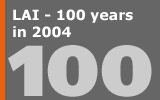UNODC's 2006 World Drug Report showed global opium production fell five percent in 2005 while cocaine production was broadly stable. Seizures of both drugs, especially cocaine, reached record highs. Consumption of cannabis, the most widely used illicit drug, continued to increase while the market for amphetamine-type stimulants stabilised. Africa is growing in importance for trans-shipments of cocaine and heroin to Europe.
Presenting the World Drug Report at the National Press Club in Washington, the UNODC Executive Director said trends in the global drugs market were moving in the right direction but governments needed to step up their efforts to reduce both supply and demand.
"Drug control is working and the world drug problem is being contained," he said.
"This is true whether we look over the long term or even just over the past few years. Humanity has entered the 21 st century with much lower levels of drug cultivation and drug addiction than 100 years earlier. Even more importantly, in the past few years, worldwide efforts to reduce the threat posed by illicit drugs have halted a quarter-century-long rise in drug abuse that, if left unchecked, could have become a global pandemic."
Laos, which until the mid-1990s was the third largest illicit opium producer in the world, slashed opium cultivation by 72 percent in 2005 and is on the verge of becoming opium-free. "Laos has made spectacular progress which has not received the attention it deserves," Mr Costa said.
However, the UNODC head highlighted three key weaknesses in the global drug control situation: heroin supply in Afghanistan, cocaine demand in Europe and cannabis supply/demand everywhere.
In Afghanistan, the world's largest opium producer, the area under opium poppy cultivation fell 21 per cent to 104,000 hectares in 2005, the first such decline since 2001. "Afghanistan's drug situation remains vulnerable to reversal because of mass poverty, lack of security and the fact that the authorities have inadequate control over its territory," Mr Costa warned. "This could happen as early as 2006 despite large-scale eradication of opium crops this spring."
Some encouraging trends were noted on the coca/cocaine market. Coca cultivation and cocaine production were broadly stable while seizures of cocaine rose to new highs. Global cocaine use declined slightly.
"Demand for cocaine is rising in western Europe to alarming levels," Mr Costa said. "I urge European Union governments not to ignore this peril. Too many professional, educated Europeans use cocaine, often denying their addiction, and drug abuse by celebrities is often presented uncritically by the media, leaving young people confused and vulnerable."
After years of increases in the 1990s, the market for amphetamine-type stimulants (ATS) is stabilizing, reflecting improved law enforcement and better precursor control. Some 25 million people used amphetamines at least once in 2004, while some 10 million used ecstasy. Total ATS production was estimated at 480 tons in 2004, which is lower than the peak in 2000.
The U.S. authorities again dismantled the largest number of illegal methamphetamine laboratories - over 17,000 in 2004, more than 90 percent of the global total. While abuse of methamphetamine remained stable or declined among secondary students over the last few years, treatment demand for methamphetamine abuse in the United States has grown dramatically.
Many countries have the drug problem they deserve
The 2006 World Drug Report devotes special attention to cannabis, the world's most abused illicit drug. Cannabis was used by an estimated 162 million people at least once in 2004, equivalent to some four per cent of the global population age 15-64, and consumption continued to increase.
The UNODC Executive Director warned that cannabis was now considerably more potent than a few decades ago and said it was a mistake to dismiss it as a "soft" and relatively harmless drug. Evidence that cannabis use can cause serious mental illness is mounting.
"Today, the harmful characteristics of cannabis are no longer that different from those of other plant-based drugs such as cocaine and heroin," Mr Costa said.
"National policies on cannabis vary and sometimes change from one year to the next," he added.
"With cannabis-related health damage increasing, it is fundamentally wrong for countries to make cannabis control dependent on which party is in government. Policy reversals leave young people confused as to just how dangerous cannabis is. The cannabis pandemic, like other challenges to public health, requires consensus, a consistent commitment across the political spectrum and by society at large."
"After so many years of drug control experience, we now know that a coherent, long-term strategy can reduce drug supply, demand and trafficking," Mr Costa concluded. "If this does not happen, it will be because some nations fail to take the drug issue sufficiently seriously and pursue inadequate policies. Many countries have the drug problem they deserve."



